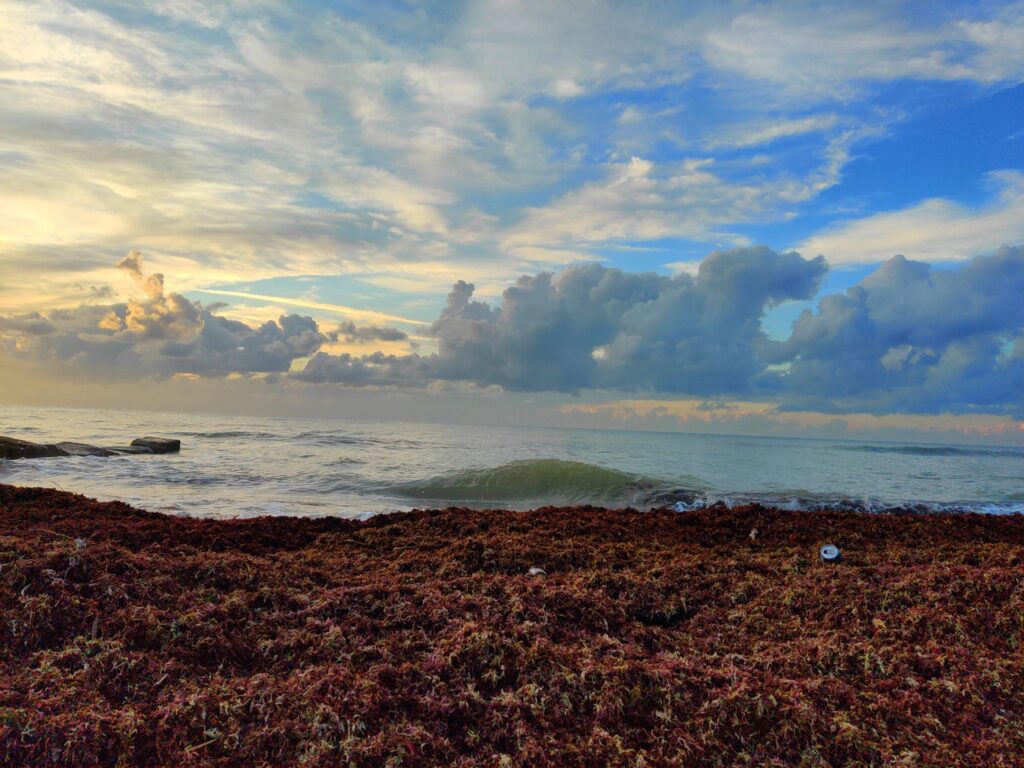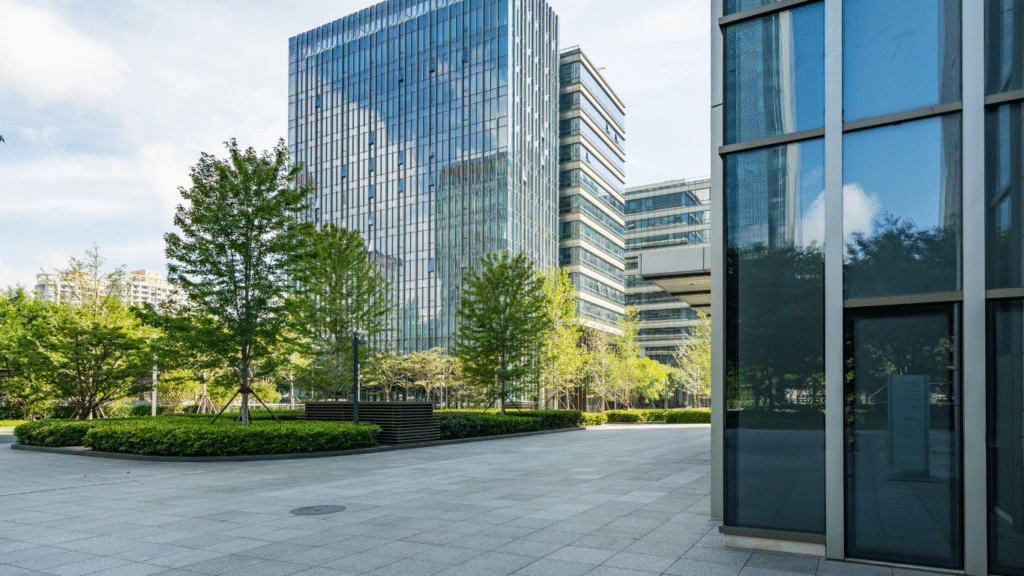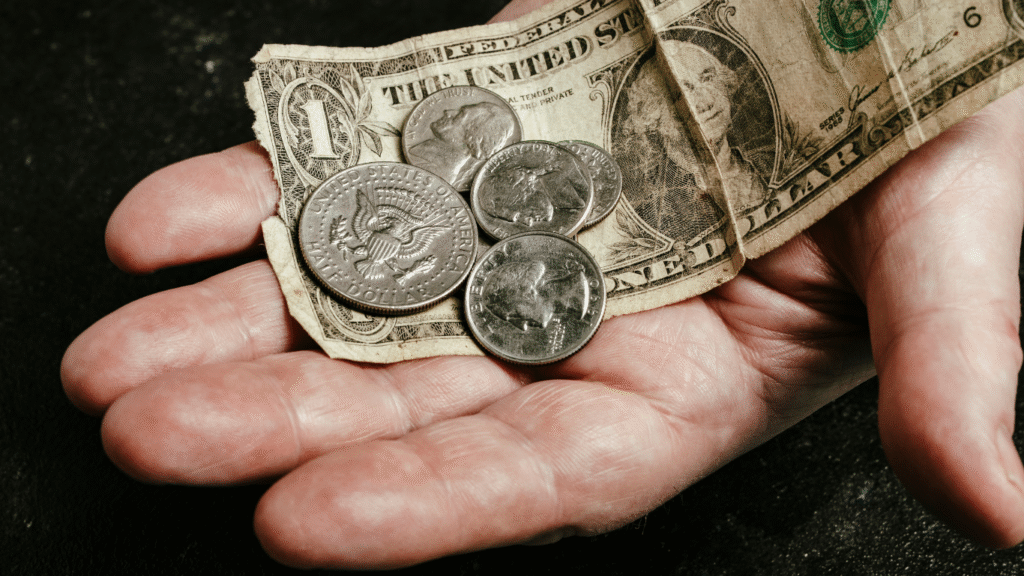Where there should be clear blue waves, an uninvited guest now sprawls — sargassum, bloated with brown sludge, reeking of rot, and slowly devouring Caribbean shorelines.
The New Normal: A Seaweed Invasion
The invasion of seaweed along Caribbean shores has intensified year after year, with scientists pointing fingers at climate change. As ocean temperatures rise and currents shift, the region is seeing a surge in sargassum blooms like never before.
According to a recent University of South Florida (USF) report, April 2025 recorded a staggering 31 million tons of sargassum floating across the western Atlantic and eastern Caribbean, the highest volume ever tracked for that month. Experts now warn that 2025 could be the worst year on record for these smothering brown algae.
On the ground, the impact is just as dramatic. Local businesses in Cayman describe being “under siege” by the seaweed, while the Tobago Hotel and Tourism Association reports on the strenuous clean-up efforts, having spent over $250,000 in clean-up costs last year alone. Fisherfolk, too, are losing income, as tangled nets and blocked waterways make daily operations nearly impossible.
The Toll: Economic, Environmental, and Public Health Costs
Sargassum is a marine menace to the Caribbean. Unsightly, seaweed-choked beaches drive tourists away, while clean-up efforts bleed hoteliers dry. The economic blow trickles down to fishermen whose livelihoods are stalled as the seaweed strangles access to the sea.
The economic costs are clear, however public health is also a cause for concern. As the sargassum rots, it releases toxic gases like hydrogen sulphide and ammonia, exposing communities to foul air and may cause mild to serious health risks including respiratory, cardiovascular, and neurological impacts.
This isn’t just an inconvenience it’s a multi-front crisis eating away at the environment, economy, and well-being.
Ripe for Innovation: Regional Responses Gaining Ground
The seaweed invasion isn’t new. It returns like clockwork every few months, and yet, we seem stuck. Instead of reaching for innovation, we keep reaching for rakes. Have we missed the innovation window? Not quite. There’s still time to flip the script.
The Caribbean cannot afford to be passive in the face of recurring climate-induced challenges. Reacting only when things get unbearable costs the region time, money, and momentum. So why aren’t we leading the charge to conquer this crisis?

Photo by Pexel Images
Well, the scenic island of Grenada with a population of just over 100,000 has taken up the mantle and is spearheading the movement to make sargassum a national resource. Prime Minister Dickon Mitchell of Grenada co-chaired the EU-Caribbean Global Gateway Conference on Sargassum, held in Grenada, where sustainable practices and economic opportunities for sargassum in the Caribbean were discussed. Mr. Dickon Mitchell announced a bold plan to convert 10,000 tons of sargassum into valuable products by 2026.
Since then, 33 companies have pitched ideas to the government — a clear sign that the business world sees serious potential. Grenada has since partnered with SarGas, a company that converts sargassum seaweed into renewable biogas and biofertilizer. Seaweed isn’t just a nuisance. It’s an opportunity. Think biofuels, organic fertilizers, bioplastics, cosmetics, pharmaceuticals and even construction materials.
Internationally, companies and scientists have been working on viable solutions to convert seaweed into a resource. UK-based company Seafields has created a water-farm to capture sargassum before it reaches land, stopping it from decomposing and generating methane. They propose that this can save Caribbean governments and hotels hundreds of millions of dollars in sargassum disposal costs. Sea6 Energy, an Indian firm based in Bengaluru, is converting seaweed into biofuel to fight climate change. They are utilizing innovation and marine farming to create sustainable energy. In Mexico, sargassum is being used to create skin care and soil additives by the company CarbonWave.
Grenada and other islands can go further. Licensing businesses to harvest sargassum, or offering permits to test and deploy seaweed technologies, could turn a national headache into a sustainable revenue stream.
The Road Ahead: Complex but Worthwhile
Of course, this transformation won’t be simple. Turning sargassum into opportunity sounds good on paper, but the execution is a whole different story. Many of the proposed solutions require tons of fresh water, energy, and infrastructure that some Caribbean nations simply don’t have. High upfront costs and investor hesitancy, driven by uncertainty around long-term profits, are also major hurdles.
Add to that logistical challenges like safe collection methods and scaling tech locally and it’s clear: this isn’t a plug-and-play solution. But that doesn’t mean it’s impossible. It just means it’s going to take vision, coordination, and serious investment to get it right.
Still, this is a regional issue that demands a regional response. Coordinated policies, shared technologies, and strategic partnerships could help turn the tide.
Turning the Brown Tide into a Green Opportunity
The Caribbean has the talent. The creativity. The need. Sargassum doesn’t have to be a seasonal curse it can be a renewable resource and economic catalyst. But it will take leadership, collaboration, and a shift in mindset.
We don’t need to wait for another “worst year on record.” The time to lead is now and the opportunity is floating right in front of us.



